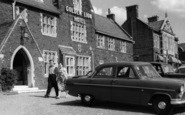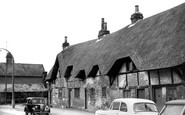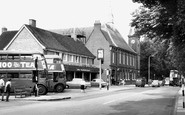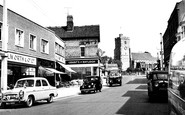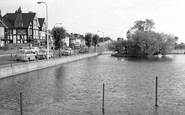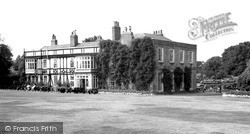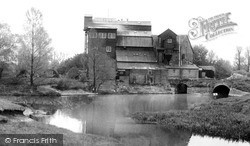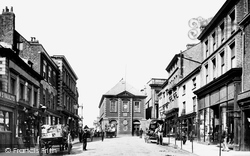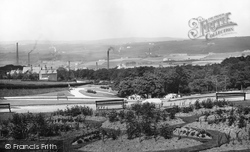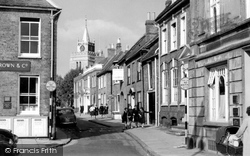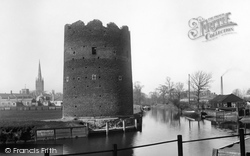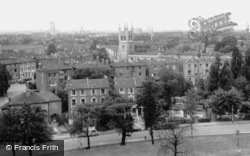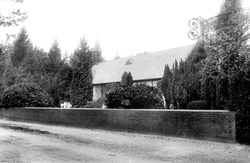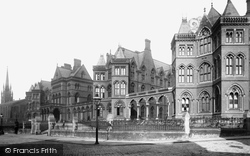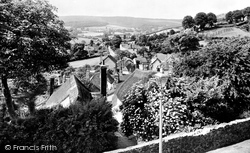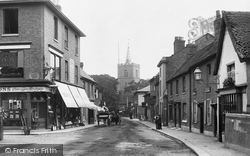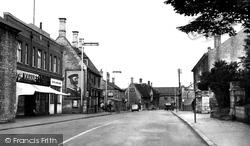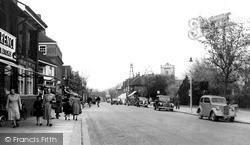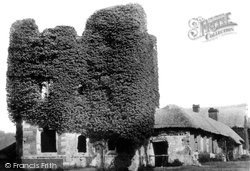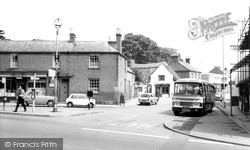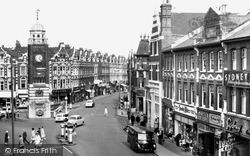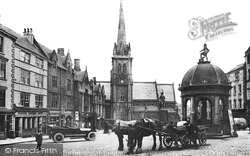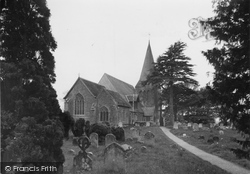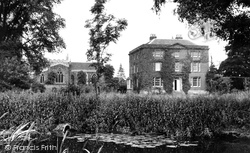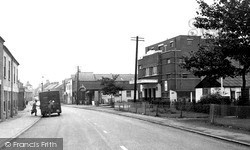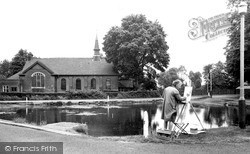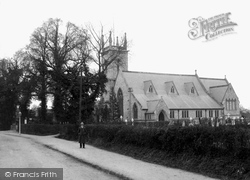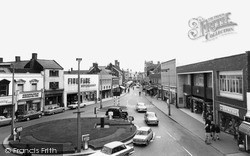Places
Sorry, no places were found that related to your search.
Photos
Sorry, no photos were found that related to your search.
Maps
Sorry, no maps were found that related to your search.
Books
Sorry, no books were found that related to your search.
Memories
655 memories found. Showing results 151 to 160.
South Weald School 1959 Ish
The old school was still in the village - the toilets seem to be well remembered - how I hated those. The old school for me smelled of those tablets of paint which were used in art class, for dabbling. That smell ...Read more
A memory of South Weald in 1959 by
Bank House Yoxford
When I was a child, my great-aunt, Mrs Judith Pheby, lived in Bank House, Yoxford, and was its caretaker. The bank only visited the village once a week, I think, and the rest of the time the bank was closed. The house is on the ...Read more
A memory of Yoxford in 1959
My First Job
I worked and lived at the Golden Lion Hotel, beginning when I was 19, fresh out of Westminster Hotel School, when I was a trainee/assistant manager there from 1959-63 or 64, with the exception of the winter of 1962/63 when I worked in ...Read more
A memory of Hunstanton in 1959 by
Not A Pretty Polly
My brother in law was to look after pigs at a farm which I believed belonged to a Major Wills in Thatcham. Now it was the summer time and as far as I can recall my sister had not long since had a baby and that she was somewhat ...Read more
A memory of Thatcham in 1959 by
The Cricketers Arms And The Town Hall
I always remember the Cricket Green as the lazy hazy days of summer. My father played cricket here, I don't remember the name of his team, but we had to sit and watch him. I liked it when the crocuses poked ...Read more
A memory of Mitcham in 1959 by
Happy Childhood
We moved from Balham to Burgess Hill in 1956. My parents had bought 267 Junction Road and then proceeded to renovate the house as it was in a shocking condition. Both my parents worked in London so I walked to my grandparents' ...Read more
A memory of Burgess Hill in 1959 by
School Days
I attended Ruabon Girls Grammar School from 1954 to 1959, happy days. At that time we were taught in 'the huts', we did not get the new school until the year before we left. I now live near the school but all that is left is one brick ...Read more
A memory of Ruabon in 1959 by
Looking For Friends
55 years ago I went to a private school in Herefordshire, and during the breaks I used to stayed with Webb family in Rayleigh, Essex county. Aunt Mary was my guardian while being over there. She had two children, William and ...Read more
A memory of Rayleigh in 1958 by
School Uniform And Schooldays
This was 1958 the time when I seriously got into drainpipes, drapes and rock 'n roll music. I was at Walbottle Secondary Modern School. I used to take in the leg width of my jeans by hand using a needle and thread to ...Read more
A memory of Newburn in 1958 by
Three Kings Piece
I don't know why we called it Three King's Piece but in the mid 50's to the early 60's when I was growing up, that was what we called it. I lived in the flats in Armfield Crescent and when we went to Three Kings Piece we went the ...Read more
A memory of Mitcham in 1958 by
Captions
405 captions found. Showing results 361 to 384.
Through the 16th century, and into the 17th, rooms were added; in c1820 the brick wing clearly visible in the photograph was built.
In the early 1970s the mill was a definite 'No Go' area for Kempston children. Semi-derelict; a collection of rusting iron and crumbling brick, its former glories (few) were well hidden.
Wrexham stands on a tributary of the river Dee. It has a long history - it was known to the Saxons as Wrightesham or Wrightelesham.
This view from the top of Whitehall Park looks over the flower beds to Darwen beyond.
In front of the church is the County Museum; nearer the camera, behind the 'No Waiting' sign, is one of Aylesbury's best town houses, with arched sash windows to the ground floor.
This massive medieval structure, formed of flint and ruddy Dutch bricks, squats close by the river, near Bishop Bridge.
This view is from an upper balcony of Eldon House, one of the eleven-storey blocks of council flats built c1960 on the Loughborough Estate.
Nine Mile Ride runs east to west from south Easthampstead to south of the Arborfield Garrison, originally cutting through Windsor Forest; it is now developed with long lines of bungalows.
This imposing brick building was built in the Gothic style to the design of George Gilbert Scott in 1868. In the distance is St George's church, another Victorian creation.
The architectural style is actually one which is common to areas around the Bristol Channel.
Although Church Street has had much rebuilding in recent years it still retains its character and is one of the best streets in the old town.
The High Street of the old village, now traffic calmed, has shops somewhat marred by security shutters, but in the 1950s all that was in the future.
The High Street, fashioned in the 1930s, drops down to the original village centre, with the graveyard to St Martins church on the immediate right.
Built by Archbishop Warham in the early 16th century, this small manor house, consisting of a three-storey brick tower, a gallery (later turned into cottages), and the single-storey storehouse beyond
The battlemented tower of St Bartholomew's (left) just shows above the row of rather good brick and tile cottages, into which the post office has been thrust.
The battlemented tower of St Bartholomew's (left) just shows above the row of rather good brick and tile cottages, into which the post office has been thrust.
This area was called Crouche in 1400; the name derives from Old English 'cruc' or cross, but does this mean cross-roads or near to the cross?
This wonderful photograph shows a beautiful convertible car, probably belonging to one of the landed gentry; the two delivery men enjoy a break whilst their horses tuck into their nosebags; and the little
All Saints' Church looks out over the marshes by Church Farm, and stands at the west gates to the castle (not now the public entrance, which is from the Wartling Road).
At the end of Church Lane to the west of All Saints' Church the base of a medieval cross survives with its new shaft and head of the 1920s.
Syston, a Domesday village situated about four miles north of Leicester, was industrialised by an influx of framework knitters in the 19th century, which generated standardised red brick buildings
This lovely village extends from Highwood Hill to the north to Mill Hill East underground station in the south.
The foundation stone was laid by the Hon Miss Mary Ann Ursula Addington, daughter of Viscount Sidmouth, on 20 April 1843 after a service conducted by the Vicar of Sonning, the Rev Hugh Nicholas Pearson
The modern architecture sits very uncomfortably with the earlier buildings – an example is the Fine Fare building, which now houses Super Drug.
Places (0)
Photos (0)
Memories (655)
Books (0)
Maps (0)



